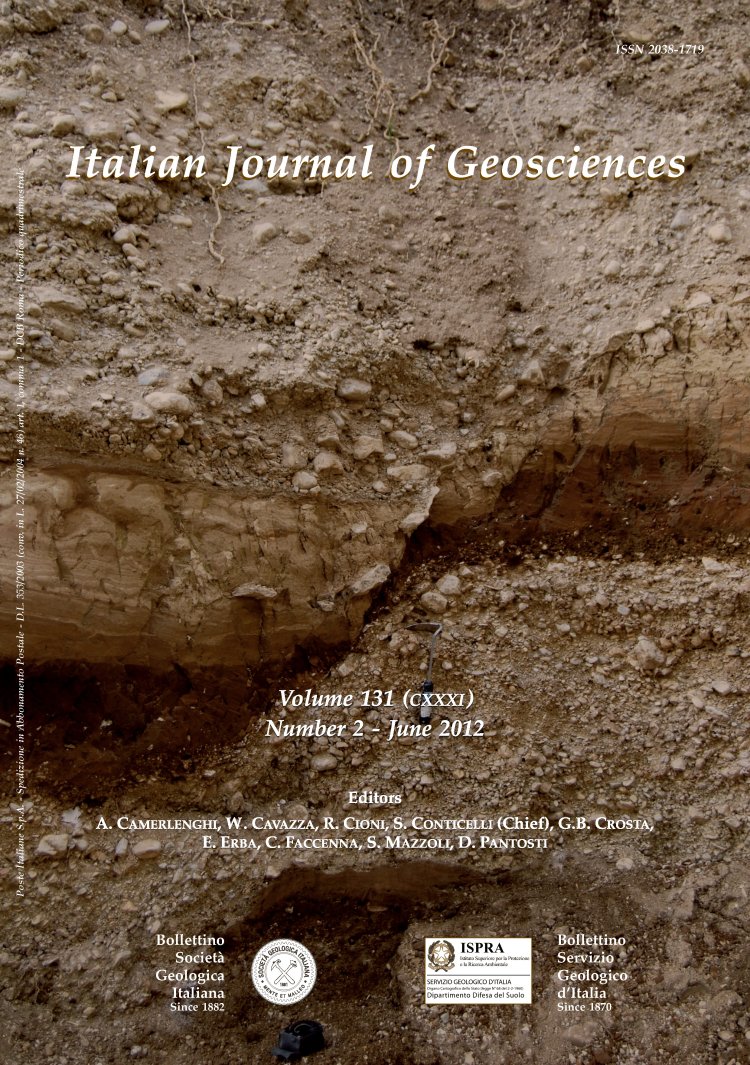
New archeomagnetic and 226Ra-230Th dating of recent lavas for the Geological map of Etna volcano
Jean-Claude Tanguy(*), Michel Condomines(**), Stefano Branca(***), Santo La Delfa(****) & Mauro Coltelli(***)
(*) Institut de Physique du Globe de Paris and CNRS - 94107 Saint-Maur des Fossés cedex, France.
(**) Université de Montpellier2 and CNRS - 34095 Montpellier cedex 5, France.
(***) Istituto Nazionale di Geofisica e Vulcanologia, Osservatorio Etneo, Piazza Roma, 2 - 95125 Catania, Italy. Corresponding authors: phone: +390957165800; e_mail: stefano.branca@ct.ingv.it
(****) Dipartimento di Scienze Geologiche, Università di Catania,Corso Italia, 55 - 95129 Catania, Italy.
DOI: https://doi.org/10.3301/IJG.2012.01
Volume: 131 (2012) f.2
Pages: 241-257
Abstract
This work deals with the dating of Mount Etna lava flows and eruptive fissure deposits to the last four millennia following field investigations and stratigraphic data (BRANCA et alii, 2011a). We have studied 24 of these volcanic products, including 301 large samples, through high precision archeomagnetic dating checked by 226Ra-230Th radiochronology, thus providing additional material to the previous paper by TANGUY et alii (2007). In most cases our results allow attributing ages to the historical period, although two flows are shown to be prehistoric. For the historic lavas, archeomagnetic ages can be defined within decades, except for three of them that erupted during a time span (Greco-Roman epoch) when the geomagnetic field underwent little variation. Although 60% of these volcanics exhibit ages comprised between 700 AD and 1850, only one (1285) is mentioned by contemporary written accounts. We conclude that i) historical documents alone are insufficient to reconstruct a coherent sequence of eruptions, and ii) a multidisciplinary approach is necessary to obtain a comprehensive eruptive history of such a very active volcano, useful for both scientific and civil protection purposes, even for such a geologically recent period as that of the last 10 or 20 centuries. Thanks to these new archeomagnetic and
226Ra-230Th data coupled with stratigraphic data, a comprehensive volcanic history of the still-outcropping Mount Etna volcanics is now available for the last 2,400 years.
Keywords
Get Full Text